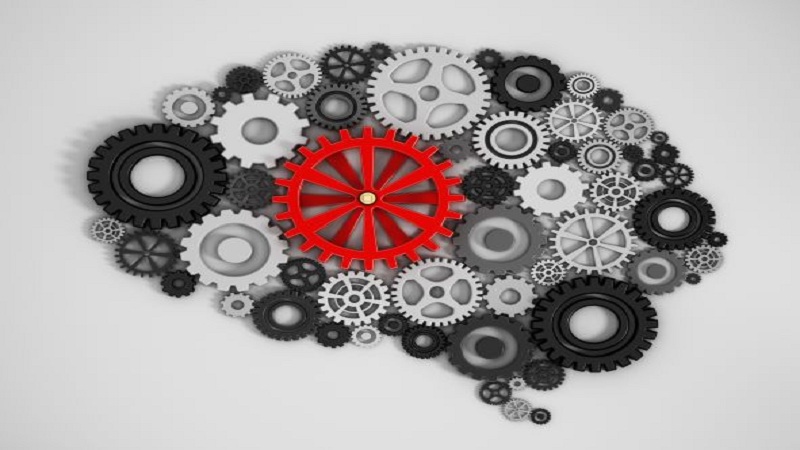Servomechanisms, commonly referred to as servos, are essential components in modern automation and control systems. Found in everything from robotics and industrial machinery to consumer electronics and vehicles, servomechanisms are responsible for delivering precise motion and control. They enable machines to respond accurately to commands, adjusting movement based on feedback to achieve the desired position, speed, or force.
This article delves deep into the world of servomechanisms, exploring their fundamental principles, key components, applications, and the significance of feedback systems. We will also look at how they have revolutionized modern technology and their future potential. Servomechanisms
1. The Basics of Servomechanisms: What Are They?
A servomechanism is a closed-loop control system that uses feedback to manage the position, velocity, or acceleration of a system. In essence, servomechanisms make it possible to control mechanical motion with precision by comparing actual performance to a target performance and making the necessary corrections in real-time.
At the core of a servomechanism is the servo motor, which generates mechanical motion. However, a servomechanism is more than just a motor—it also includes a feedback system (such as an encoder or potentiometer) and a controller that processes the feedback to adjust the motor’s output. This ability to measure and correct its own operation in real time distinguishes servomechanisms from other types of motors and control systems.
Key Components:
- Servo Motor: The motor responsible for generating motion. It can be a DC or AC motor, stepper motor, or even a specialized servo motor.
- Controller: A device that receives commands from a user or machine and sends control signals to the motor. It processes feedback and adjusts the motor’s performance accordingly.
- Feedback Device (Sensor): A device that monitors the motor’s position, speed, or torque and sends this information back to the controller.
- “The controller uses the difference between the actual and desired state, known as the ‘error signal,’ to make adjustments.”
2. Types of Servomechanisms
Servomechanisms can be categorized based on the type of motion they control and the type of motors they use. The two main types are position servomechanisms and speed servomechanisms. more read
Position Servomechanisms
Position servomechanisms are designed to control the position of an object. These systems are commonly used in robotics, CNC machines, and aircraft controls, where accurate positioning is critical. The feedback loop constantly checks the object’s position and adjusts the motor to achieve the desired outcome.
For example, in a robotic arm, a position servomechanism allows the arm to move to an exact location based on input from the controller. The servo motor drives the movement while the feedback device ensures the arm reaches the specified position.
Speed Servomechanisms
Speed servomechanisms, on the other hand, control the speed of an object’s motion. These systems are often used in applications like conveyor belts, fans, and other machinery where the speed of motion must be regulated. Speed feedback is compared to the desired speed, and any difference is corrected by adjusting the motor’s output.
3. Key Principles of Servomechanisms
Servomechanisms operate based on several fundamental principles, the most important being closed-loop feedback control and error correction. Let’s break down these concepts.
Closed-Loop Feedback Control
Closed-loop control is the defining characteristic of a servomechanism. In a closed-loop system, the controller continuously monitors the system’s output (such as the position of a motor) through feedback and compares it with the desired outcome. The difference between the two is the “error,” which the controller uses to adjust the motor’s behavior.
For example, in an elevator system, the servomechanism ensures the elevator stops precisely at each floor by using feedback from sensors to measure its position. If the elevator overshoots or undershoots the target floor, the system adjusts the motor to correct the error.
Error Correction
Error correction is the process through which servomechanisms adjust their operation based on feedback. This concept is crucial because no mechanical system can be perfectly accurate without adjustment. In real-world scenarios, factors like friction, inertia, and external forces cause deviations from the ideal behavior. By measuring these deviations (errors) and correcting them, servomechanisms achieve high levels of precision.
4. Applications of Servomechanisms
Servomechanisms play an integral role in various industries due to their ability to provide precise control over motion, positioning, and speed. Their applications span multiple domains, from everyday consumer electronics to complex industrial processes. click here
Robotics
One of the most prominent applications of servomechanisms is in robotics. Robotic systems rely on servomechanisms for accurate movement and control. Whether it’s an industrial robot welding automotive parts or a humanoid robot performing delicate tasks, servos enable robots to execute movements with incredible precision.
In robotic arms, for example, servomechanisms control the rotation and positioning of joints, allowing the arm to perform tasks such as assembling components, painting surfaces, or picking and placing objects with minimal error.
Aerospace and Aviation
In aerospace and aviation, servomechanisms are critical for flight control systems. Aircraft use servos to manage the movement of control surfaces like ailerons, elevators, and rudders, ensuring smooth and precise maneuvers during flight. These systems are essential for maintaining stability and handling in both manned and unmanned aircraft.
Autopilot systems also rely on servomechanisms to control altitude, heading, and speed, allowing pilots to focus on other aspects of flight management.
Industrial Automation
In the realm of industrial automation, servomechanisms are found in CNC (computer numerical control) machines, where they provide the precision necessary for cutting, drilling, and shaping materials. Servos control the position of machine tools, ensuring that they follow exact paths and perform tasks with repeatable accuracy.
In manufacturing assembly lines, servomechanisms control conveyor belts, robotic arms, and other machinery, facilitating efficient and high-speed production with minimal human intervention.
Consumer Electronics
Consumer electronics, such as digital cameras, widely use servomechanisms to control the lens focus, and DVD players rely on them to adjust the position of the laser for reading discs. Video game controllers and hobbyist RC (remote control) cars and airplanes use miniature servos to control steering and movement.
5. Servomechanisms in Mechatronics The Heart of Modern Engineering
Mechatronics the integration of mechanical, electrical, and computer engineering, heavily relies on servomechanisms. Modern mechatronic systems involve precise control of mechanical systems, often involving multiple servos working together in concert.
For instance, in modern automobile manufacturing, servos are used in automated welding robots that require exact positioning and timing. Additionally, mechatronics has revolutionized the medical field with surgical robots that use servomechanisms for minimally invasive procedures, allowing surgeons to perform complex tasks with improved accuracy.
In prosthetics servomechanisms have enabled the development of advanced artificial limbs that can mimic natural movements and respond to the user’s commands in real-time.
6. Challenges in Servomechanism Design and Implementation
While servomechanisms offer precise control, their design and implementation are not without challenges. Engineers must account for factors like stability, accuracy, speed, and response time when designing these systems. Any delay or error in feedback could result in incorrect positioning or movement.
Stability is a critical factor, especially in high-speed applications like robotics or aerospace, where small errors can lead to significant deviations. Servomechanisms must be designed to avoid oscillations and ensure smooth, stable performance.
Another challenge lies in the tuning of control parameters. In a servo system, parameters like proportional, integral, and derivative (PID) constants must be finely tuned to achieve optimal performance. Poor tuning can result in overshooting, undershooting, or sluggish response times, making the system less effective.
7. The Future of Servomechanisms: Innovations and Advancements
“Engineers can apply AI and machine learning algorithms to servo control systems to predict errors and adjust performance proactively, leading to even more precise and adaptive systems.
Additionally, the development of more energy-efficient servomechanisms will contribute to greener technology in industrial and consumer applications. As renewable energy and electric vehicles become more prevalent, energy-efficient servos will play a vital role in optimizing power consumption.
The integration of servomechanisms with IoT (Internet of Things) is another promising avenue. By connecting servomechanisms to the internet, engineers can monitor and control systems remotely, enabling predictive maintenance, real-time adjustments, and improved system uptime.
Conclusion
Servomechanisms are indispensable components of modern technology, driving advances in robotics, aerospace, industrial automation, and consumer electronics. Their ability to provide precise control over motion, speed, and positioning has made them essential to a wide range of applications, from manufacturing to medical devices.
As technology continues to evolve, servomechanisms will only become more sophisticated, integrating AI and machine learning for smarter, more adaptive control systems. The future of promises greater efficiency, precision, and connectivity, further expanding their role in the automated world. Understanding the intricacies of servomechanisms is crucial for engineers and innovators working to push the boundaries of what machines can achieve.


